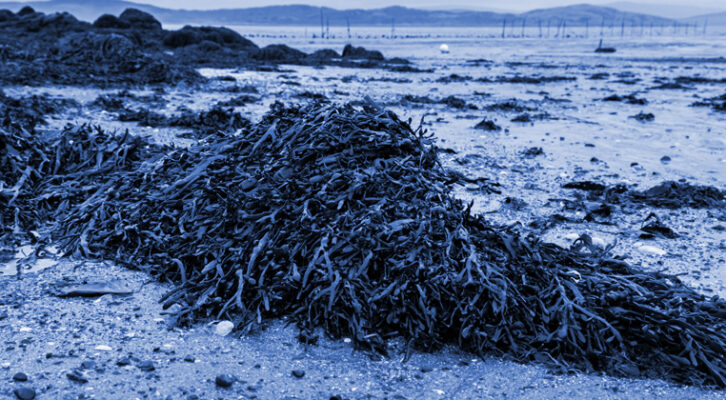
One great short story to read today: García Márquez's "The Handsomest Drowned Man in the World."
According to the powers that be (er, apparently according to Dan Wickett of the Emerging Writers Network), May is Short Story Month. To celebrate, the Literary Hub staff will be recommending a single short story, free to read online, every (work) day of the month. Why not read along with us? Today, we recommend:
“The Handsomest Drowned Man in the World” by Gabriel García Márquez
It’s not often, really, that a corpse becomes the most memorable, moving character in a story about the living, but this is exactly what happens in the Colombian writer Gabriel García Márquez’s delightful, deceptively simple short story, “The Handsomest Drowned Man in the World.” In some ways, this isn’t surprising; the line between life and death is often thin, diaphanous, in García Márquez’s fiction, where ghosts of the dead haunt characters, a long-sunk ship returns to life, and living characters are frequently likened to cadavers. But this is perhaps most on display in “The Handsomest Drowned Man in the World,” which begins with a dead man washing ashore near a small village seemingly lost to the passage of time, his body so preternaturally Brobdignagian that the children who first spot the corpse think he must be “an enemy ship” or “a whale.” Although the villagers have never seen the body before, they are immediately struck by his size and beauty, and, as they try to imagine what his life must have been like—particularly in a village like their own, where he would have struggled to fit through their narrow doors or on their small chairs—their lives forever change. Esteban, as they christen him, never says a word, but, in their imaginations, he speaks volumes, and they vow to transform their once-small, dusty home so that if he ever returns, he will feel welcome in this new, larger, efflorescent extravaganza of a world. In real life, the line between the living and the dead is never as stark as we often casually imagine; the atoms that once made up the dead make us up, too, and the blankness of before we were born is perhaps simply another way to view the cosmos we shall return to in death. Esteban’s ability to change the living even in death harkens to this simple but significant fact: that death and life are more linked than we often imagine, as García Márquez knew well, and that we should never forget the ones we call dead, for they almost certainly still have much to tell us, if we know how to listen.
The story begins:
The first children who saw the dark and slinky bulge approaching through the sea let themselves think it was an enemy ship. Then they saw it had no flags or masts and they thought it was a whale. But when it washed up on the beach, they removed the clumps of seaweed, the jellyfish tentacles, and the remains of fish and flotsam, and only then did they see that it was a drowned man.
Gabrielle Bellot
Gabrielle Bellot is a staff writer for Literary Hub. Her work has appeared in The New York Times, The Atlantic, The New York Review of Books, The New Yorker, The Paris Review Daily, The Cut, Tin House, The Guardian, Guernica, The Normal School, The Poetry Foundation, Lambda Literary, and many other places. She is working on her first collection of essays and a novel.



















